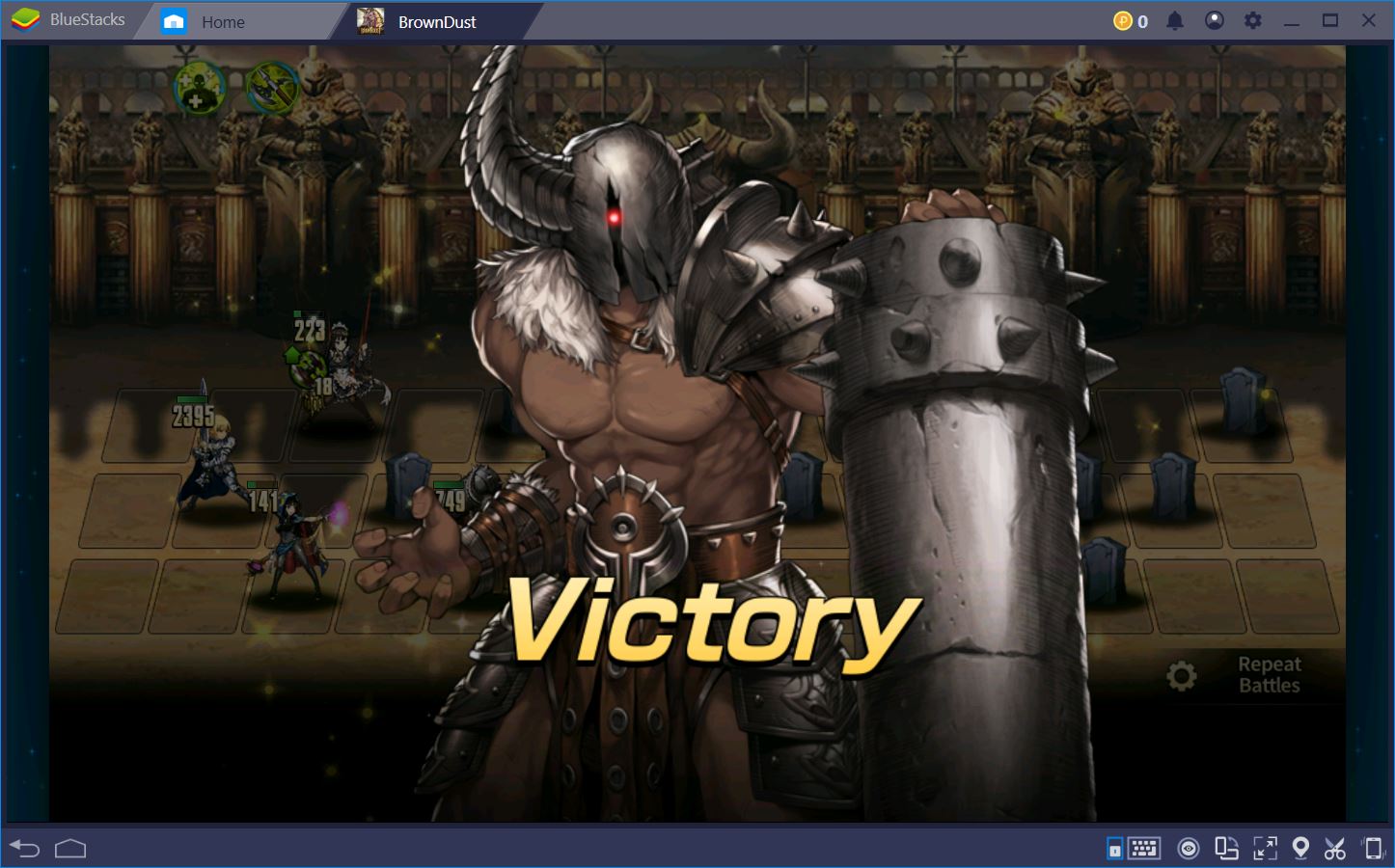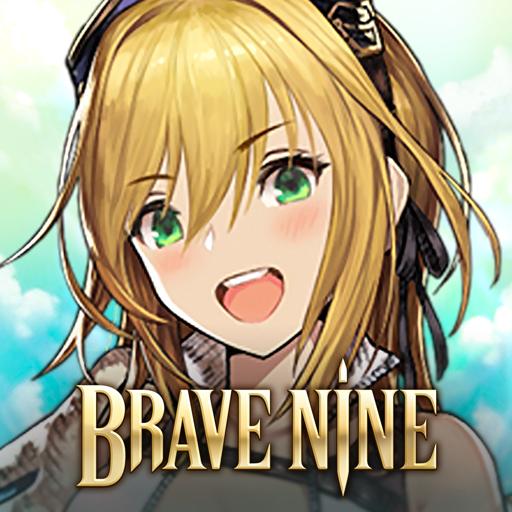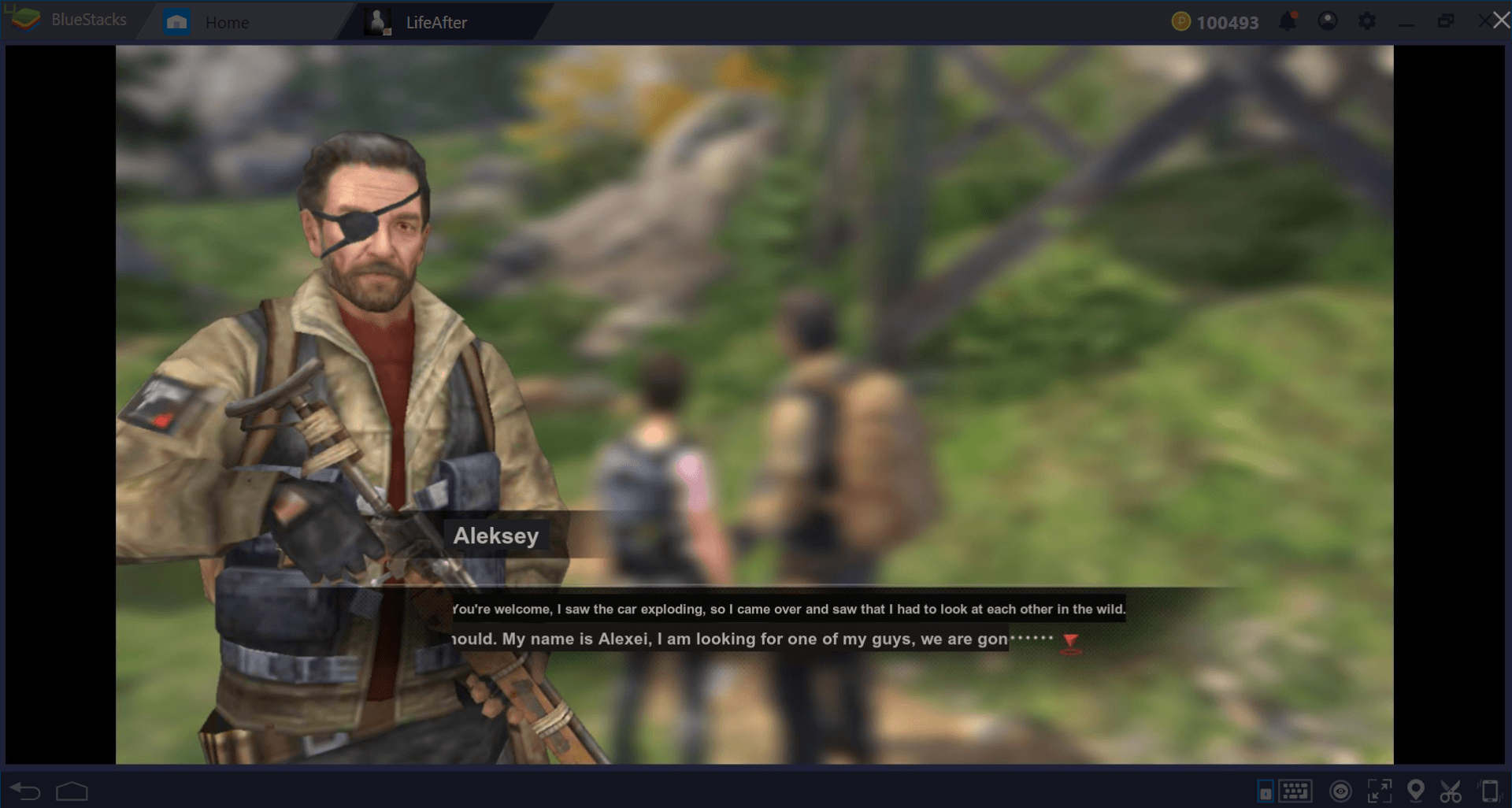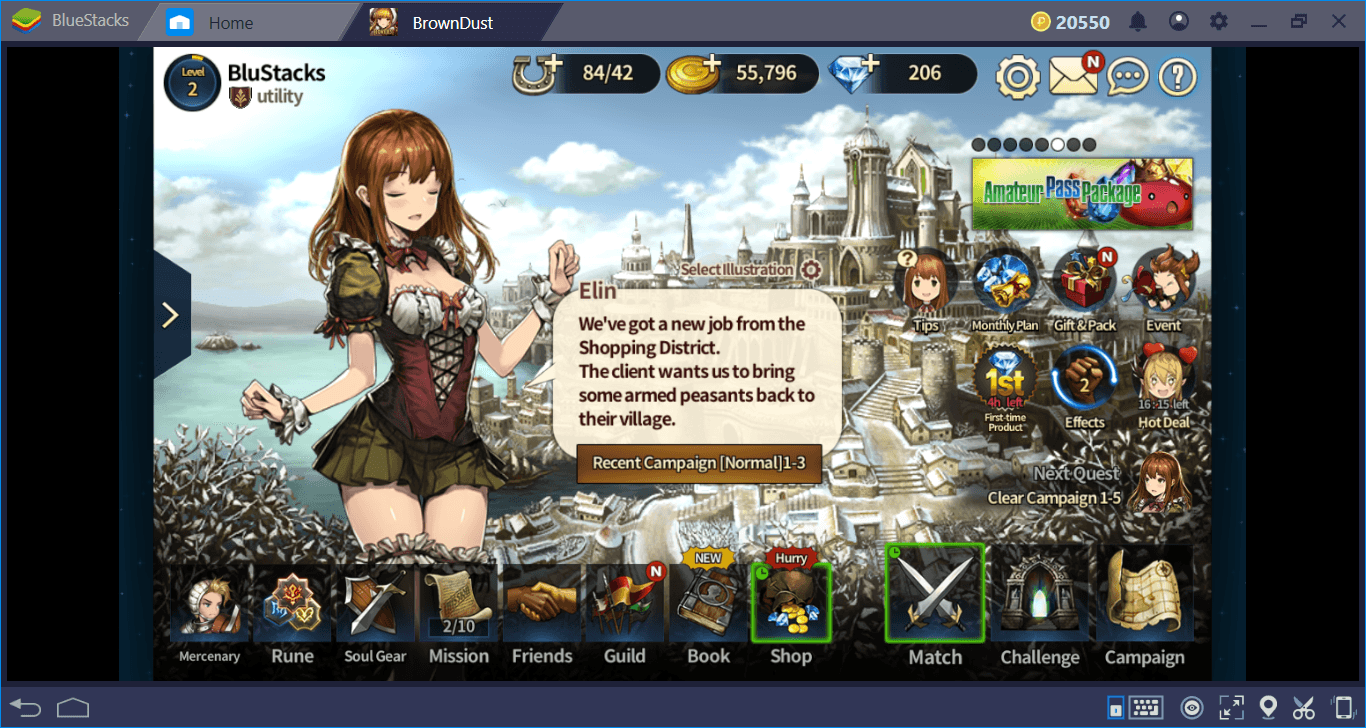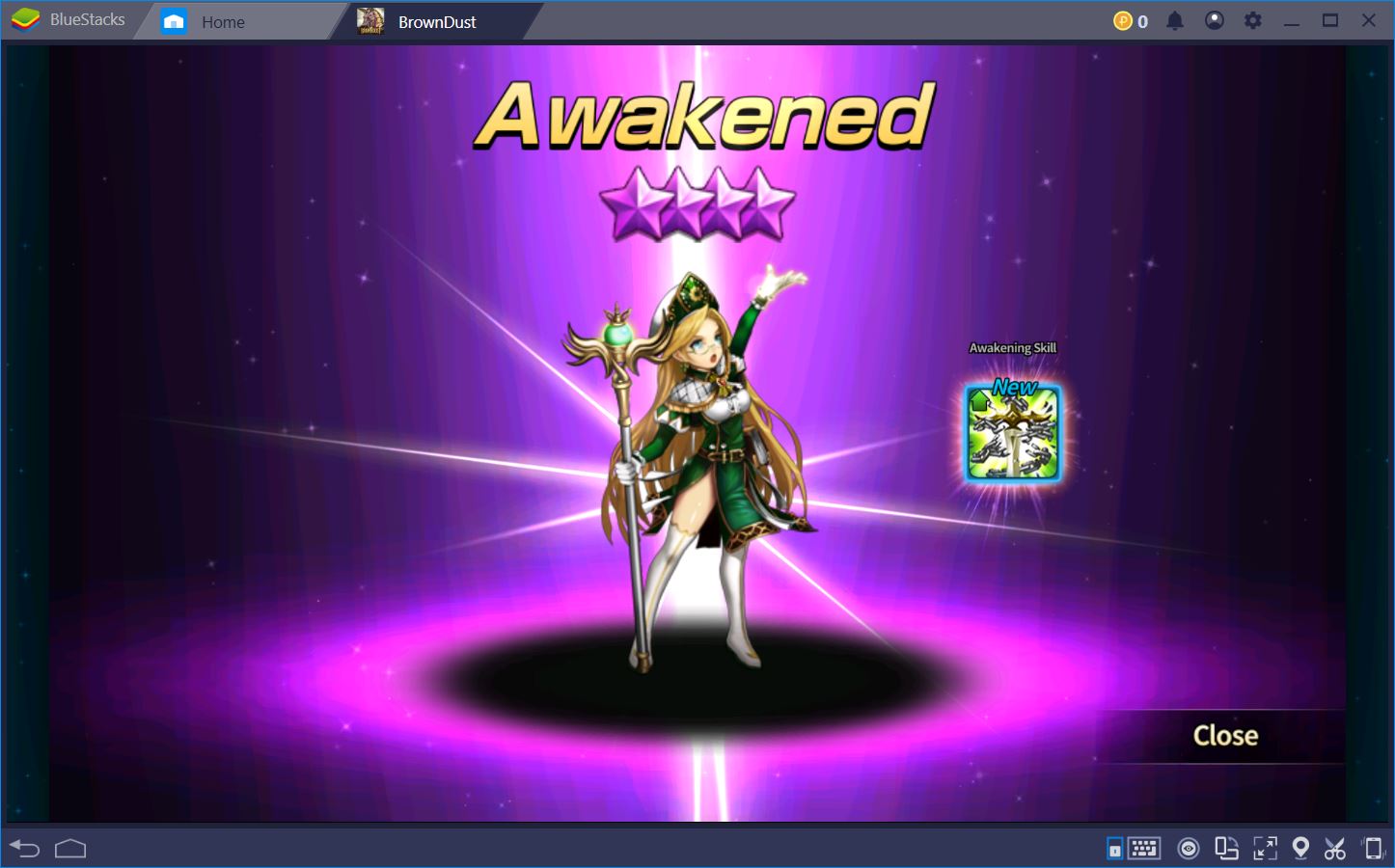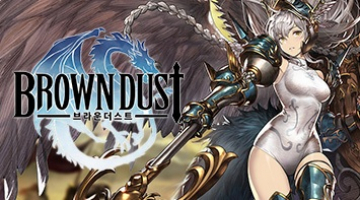Brown Dust: Advanced Tips and Tricks for Arena Battles
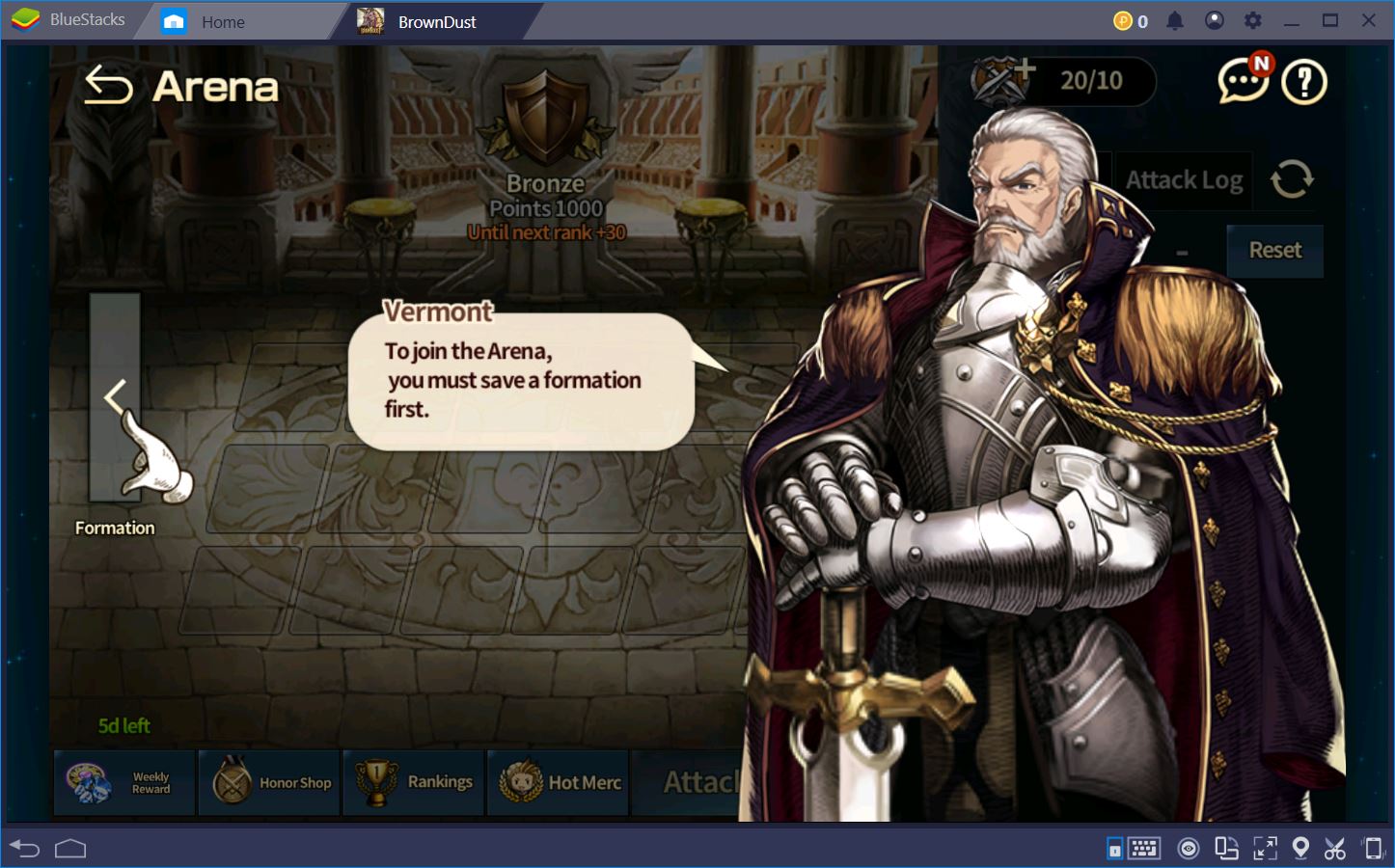
The Campaign in Brown Dust is fairly exciting to play, especially since the different stages are often accompanied by naughty exchanges between members of your party. Yet PvP is likely the most fun activity for most players – and for good reason, too. Battles in the regular and novice arenas in Brown Dust are not technically live PvP, but trying your team against those of other players and climbing the ladder is its own reward.
We’ve already covered the basics of combat in a different article and you can read more about the best 5-star heroes for the arena in this BlueStacks guide. In what follows, we’ll assume that you’re already familiar with the way PvP works in Brown Dust so that we can focus on some advanced tips and tricks that can push you to the highest leagues.
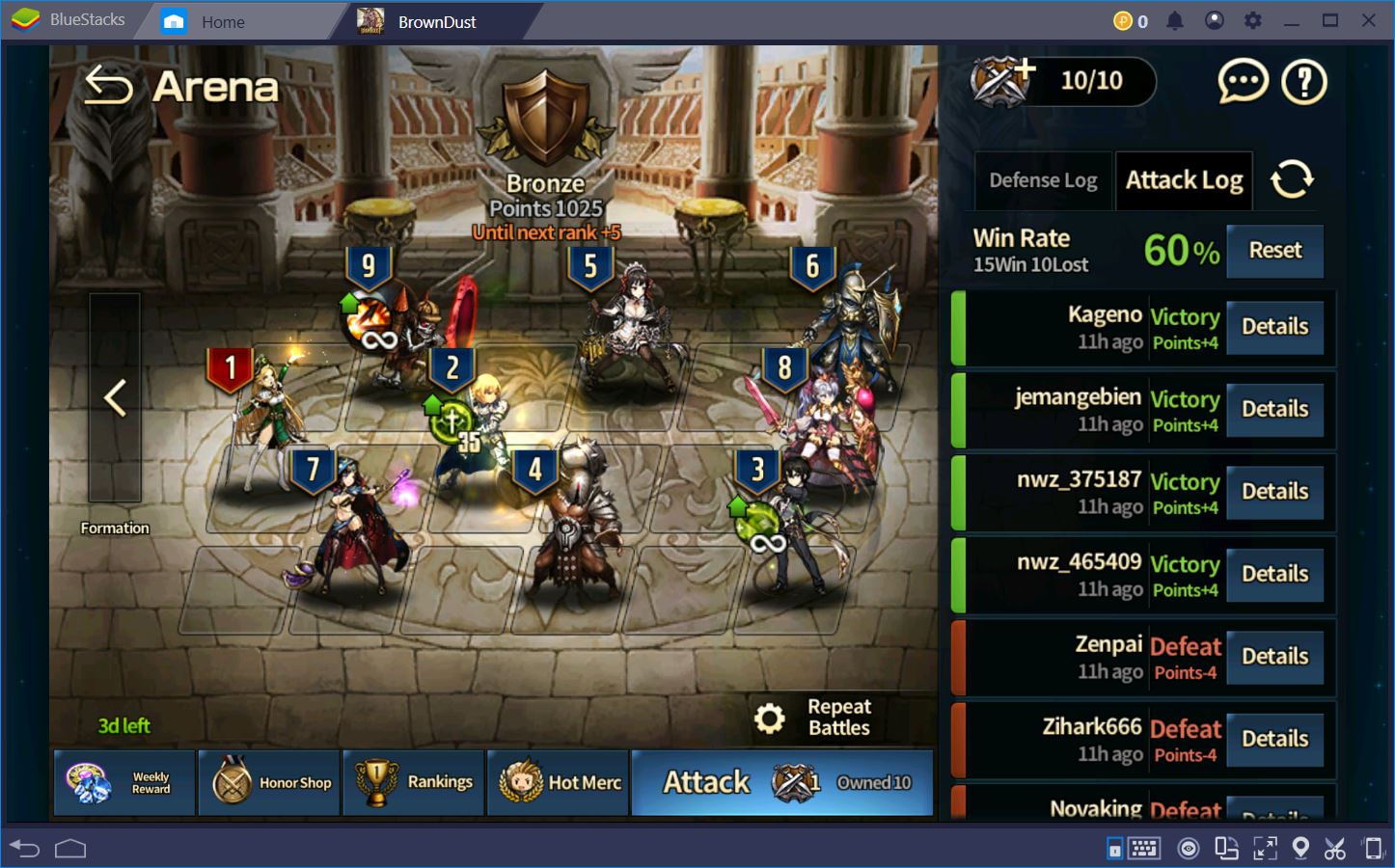
Regular vs. Novice Arena
The first PvP mode you are introduced to in Brown Dust is the regular arena, where you create a team of 9 heroes and use it to attack others or defend against them. For someone who has just become a captain, these matches are all “fun and games,” but only until the player starts to face top-tier mercenaries in every fight. From here on out, there are usually only two options with most Gacha games – sadness and longing or spending a lot of real currency on better heroes.
Brown Dust is slightly different in this respect, though. Instead of going on a spending spree, you can still enjoy PvP in the novice arena, a mode that is similar to the regular arena in terms of mechanics, but that only allows the use of originally 3-star heroes (or lower) and a maximum of 3 originally 4-star heroes.
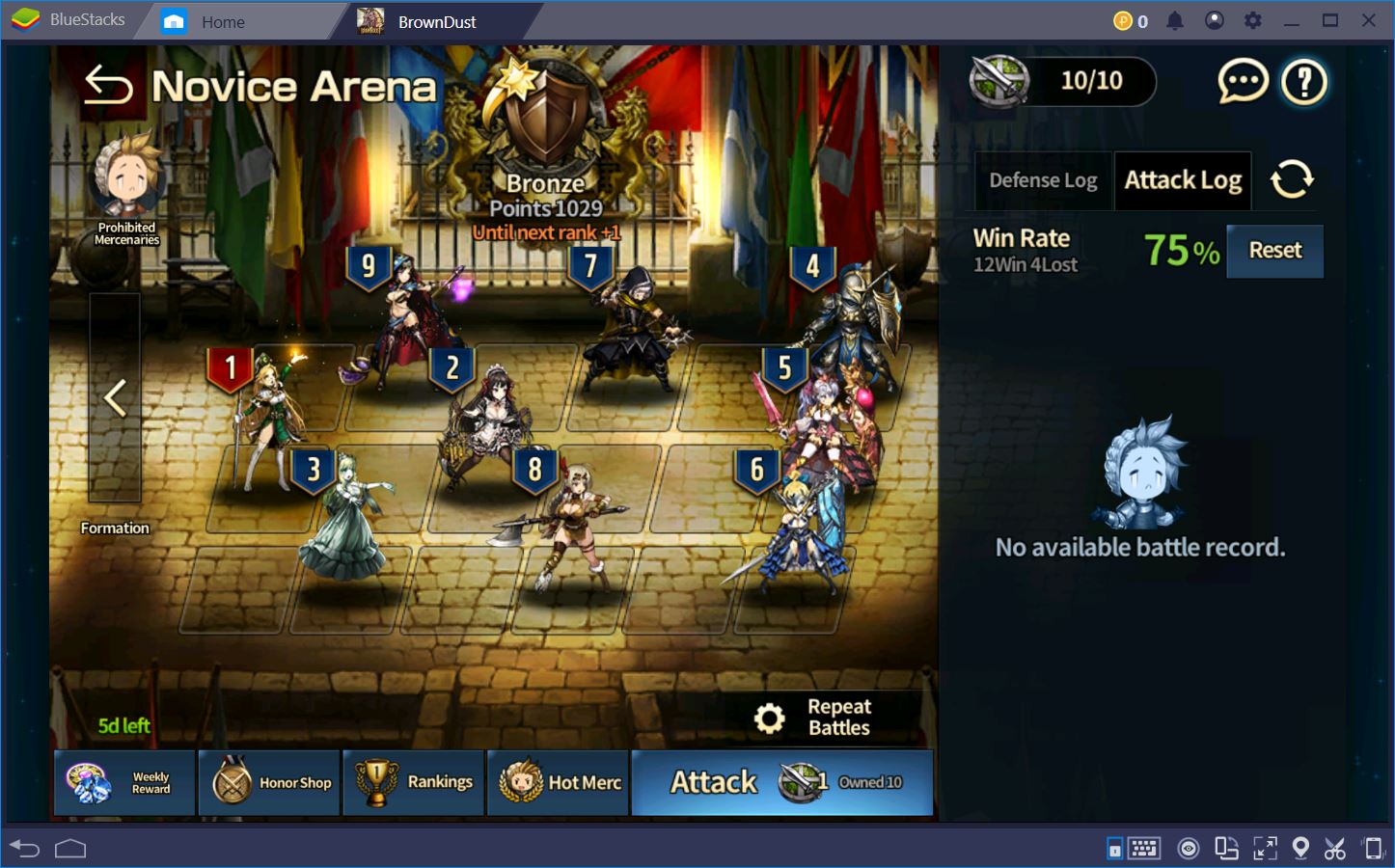
Our guide focuses on both of these PvP modes. Some tips you’ll be able to apply to regular and novice arena battles, while others will be more specific. We’ll let you know.
The Best Team Composition and the 2 Row Formation
For many seasons, top players in Brown Dust arena matches have agreed that the 2 row formation is the most effective to use. This configuration means that you use only 2 of the 3 available horizontal rows to distribute your mercenaries prior to battle. Why? Two reasons – attack priorities and AoE effects.

The traditional 2 row formation places all offensive and support units on the topmost lane and 3 defensive units on the bottom lane. A simple rule to remember here is that the defensive lane should always be under the offensive one. The first spot on both lanes is occupied by a defender and the last spot in the offensive is a support that can protect your damage dealers from enemy snipers. Essentially, your formation should look like this:
| Support | DD (Damage Dealer) | DD | DD | DD/
Support |
Defender | Enemy Team |
| – | – | – | – | – | – | |
| Defender/
Tanky DD |
– | – | Defender | – | Defender |
In Brown Dust, mercenaries attack each other according to certain priorities. With no effects on the battlefield, a mercenary’s first priority is to attack the enemy on their respective lane. If no suitable enemy can be found on their lane, however, the mercenary will always target downwards. The only two spells that can change this order are Focus Fire and Taunt (countered by Ignore Taunt).
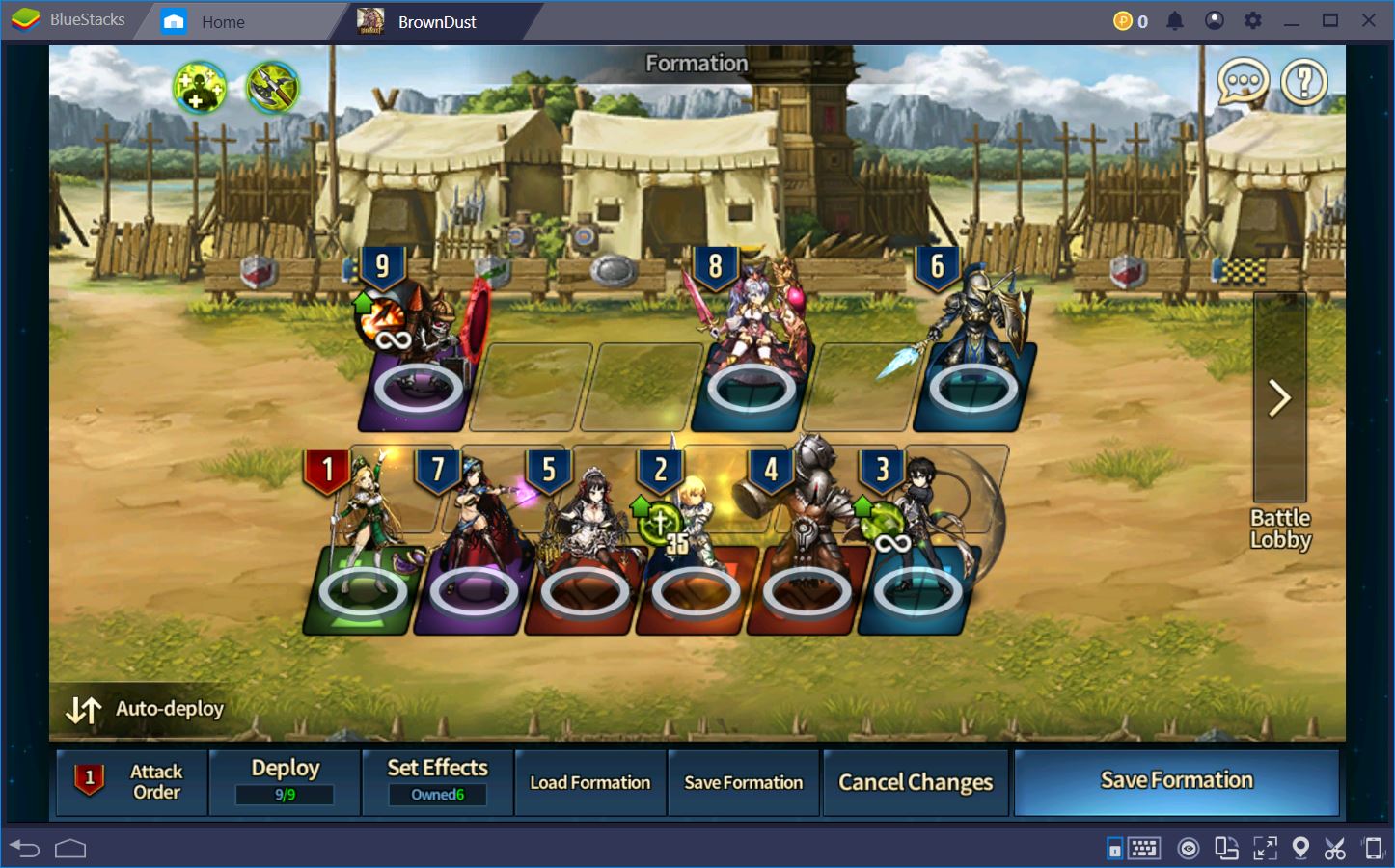
Play Brown Dust on BlueStacks 4
This is partly the reason why the 2 row formation works so well. It basically forces all units on the middle and bottom row to target your defenders, rather than your damage dealers. Furthermore, if you take the time to study the AoE attack patterns of most mercenaries, you’ll notice that this distribution of heroes avoids damage most effectively, especially when attacks are focused on the defender row.
This is not to say that there are no successful variations of the 2 row formation or that this traditional configuration cannot be defeated with some creativity. However, the recipe works incredibly well as you climb up to the topmost leagues, so it’s a great place to start for beginner and intermediate captains.
Hell: The Bane of the Novice Arena and How to Counter Her
If there is one 4-star hero that has constantly been the star of the novice arena, it’s Hell. In fact, this mercenary is so good throughout multiple modes of the game that you should opt for her the first chance you get. Her basic attack is a snipe that can deal tons of damage to an enemy on the back line, but what makes her shine is her Damage Counter + Masochism + Taunt (awakened) combo.
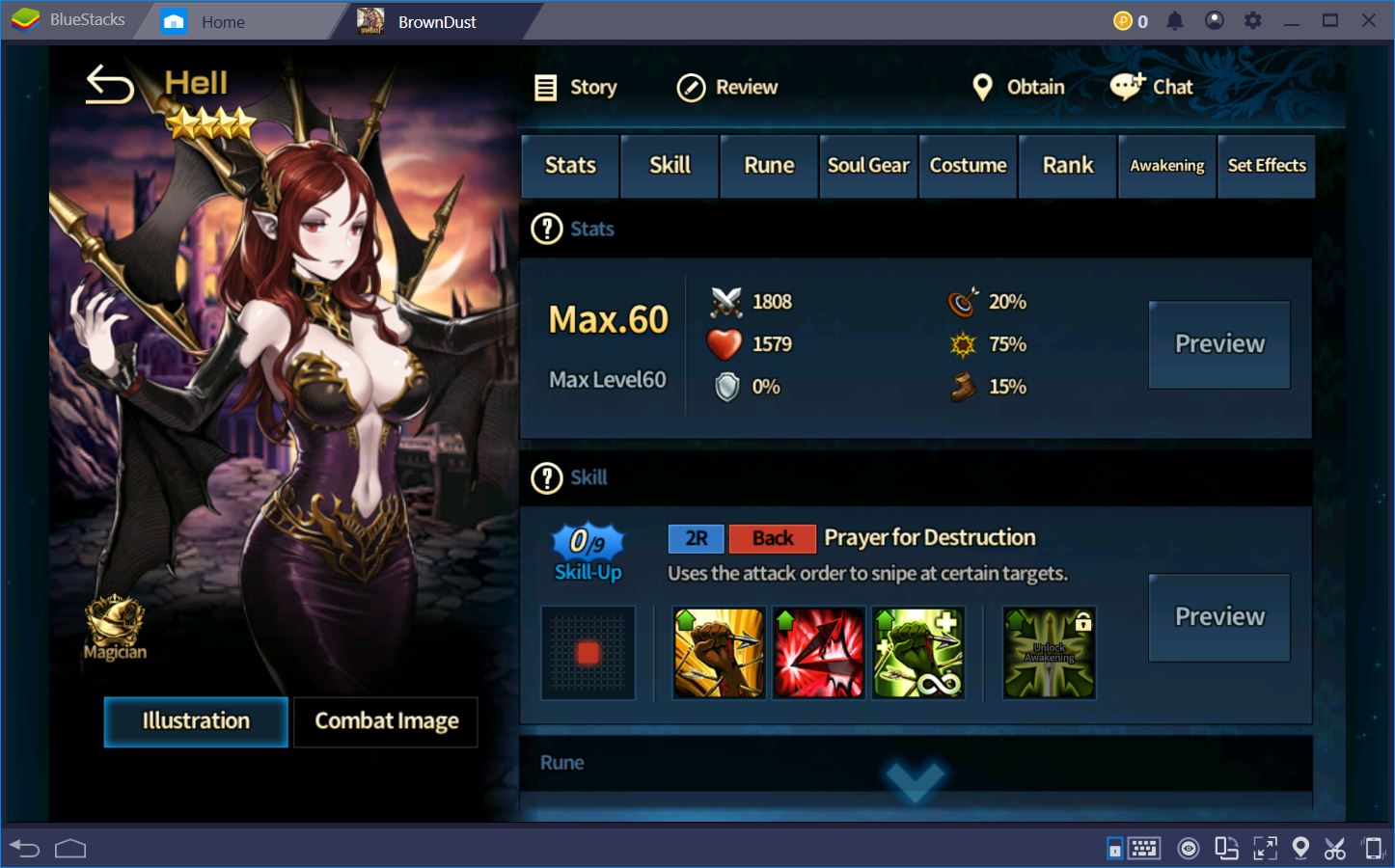
Once Hell gets the chance to cast her ability, she can easily down an entire enemy team on her own. The strongest opposing mercenaries simply kill themselves in her DMG reflect, while she survives it all with DMG reduction and the ability to heal for part of the damage taken. More than 90% of teams in the novice arena include Hell. Because of course they do.
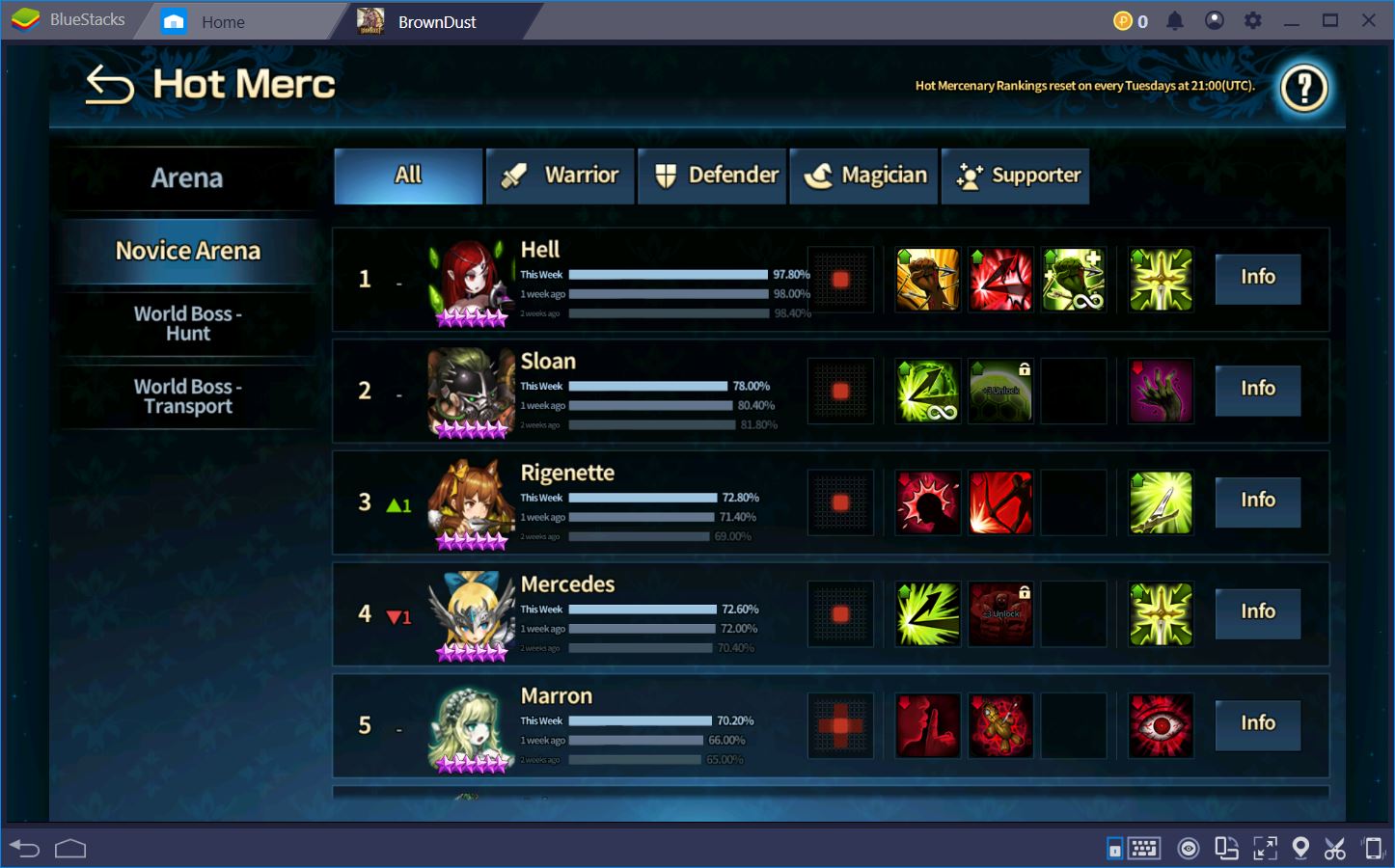
The good news is that once you can counter this nasty hero, you have the formula to defeat most teams on the ladder. The secret lies in the fact that Hell’s DMG reflect is not permanent, but cast. In other words, she has to cast it for it to start working, which gives you an entire turn to shut her down.
There are a few ways to get this done. Viola has a decent silence and targets the back line, while Marron is an even better disable due to her AoE pattern. Otherwise, you can try to set things up so that when Hell does attack, you give her a taste of her own medicine. For instance, you can use Mercedes, who reflects damage and taunts. So long as you make Mercedes act last, she will almost always draw Hell’s fire and, with a bit of luck (and a crit), the latter will kill herself.
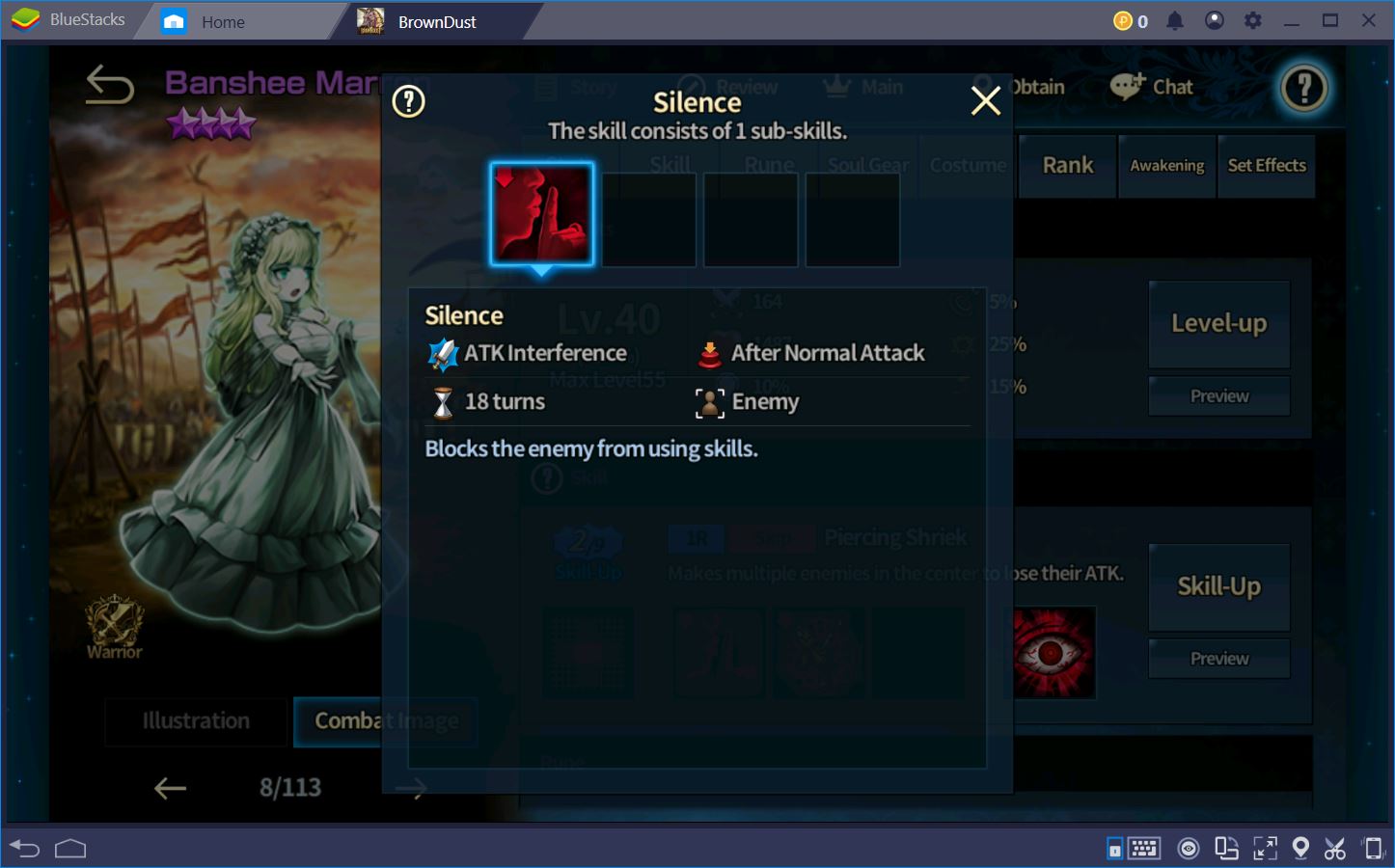
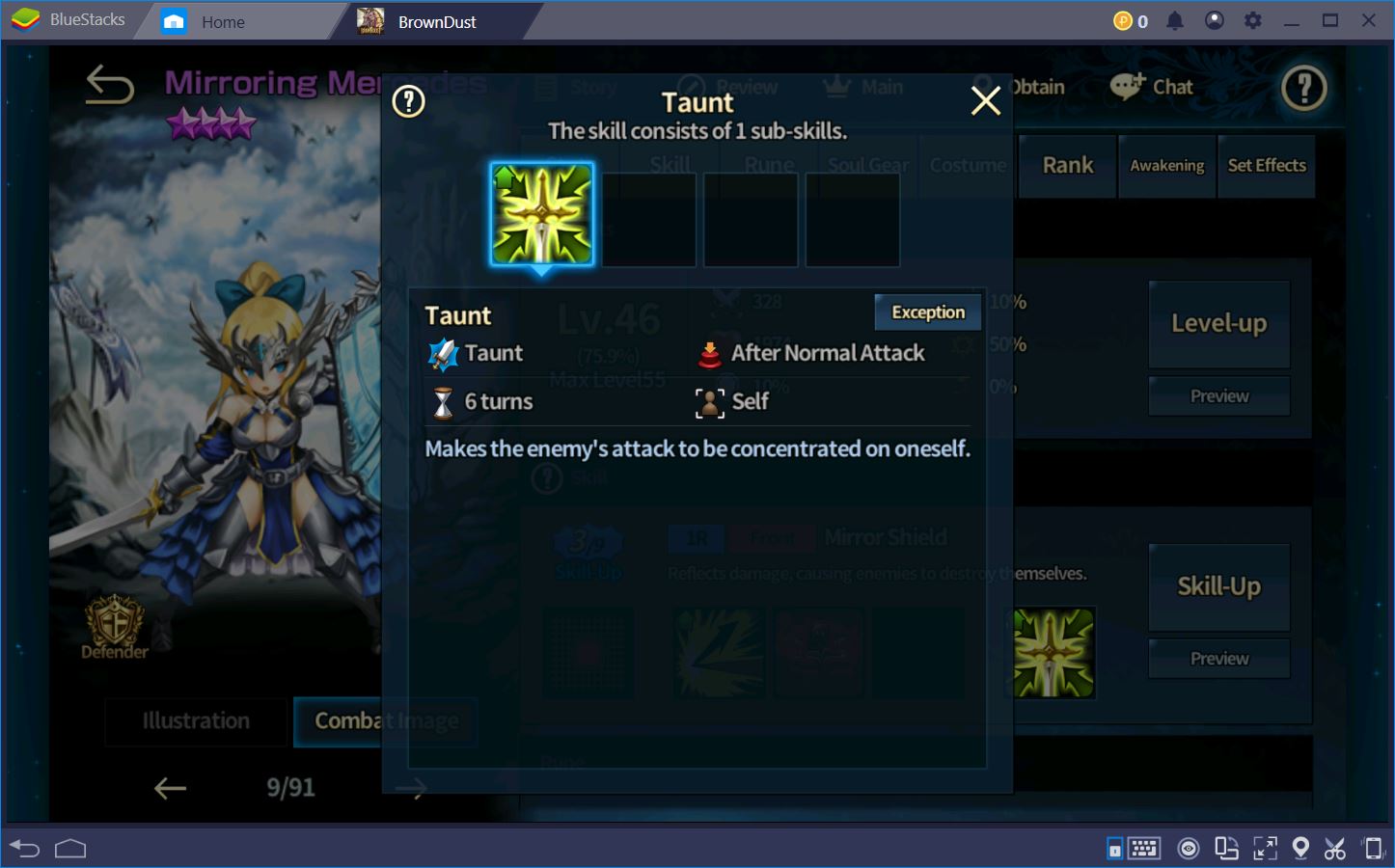
It might take a bit of tweaking in terms of positioning and order, but with these tips under your belt, you’ll soon climb the upper leagues of the ladder. Once you get your hands on the right heroes, don’t forget to do everything you can to upgrade them to their fullest potential. In the arena, every little boost counts.
